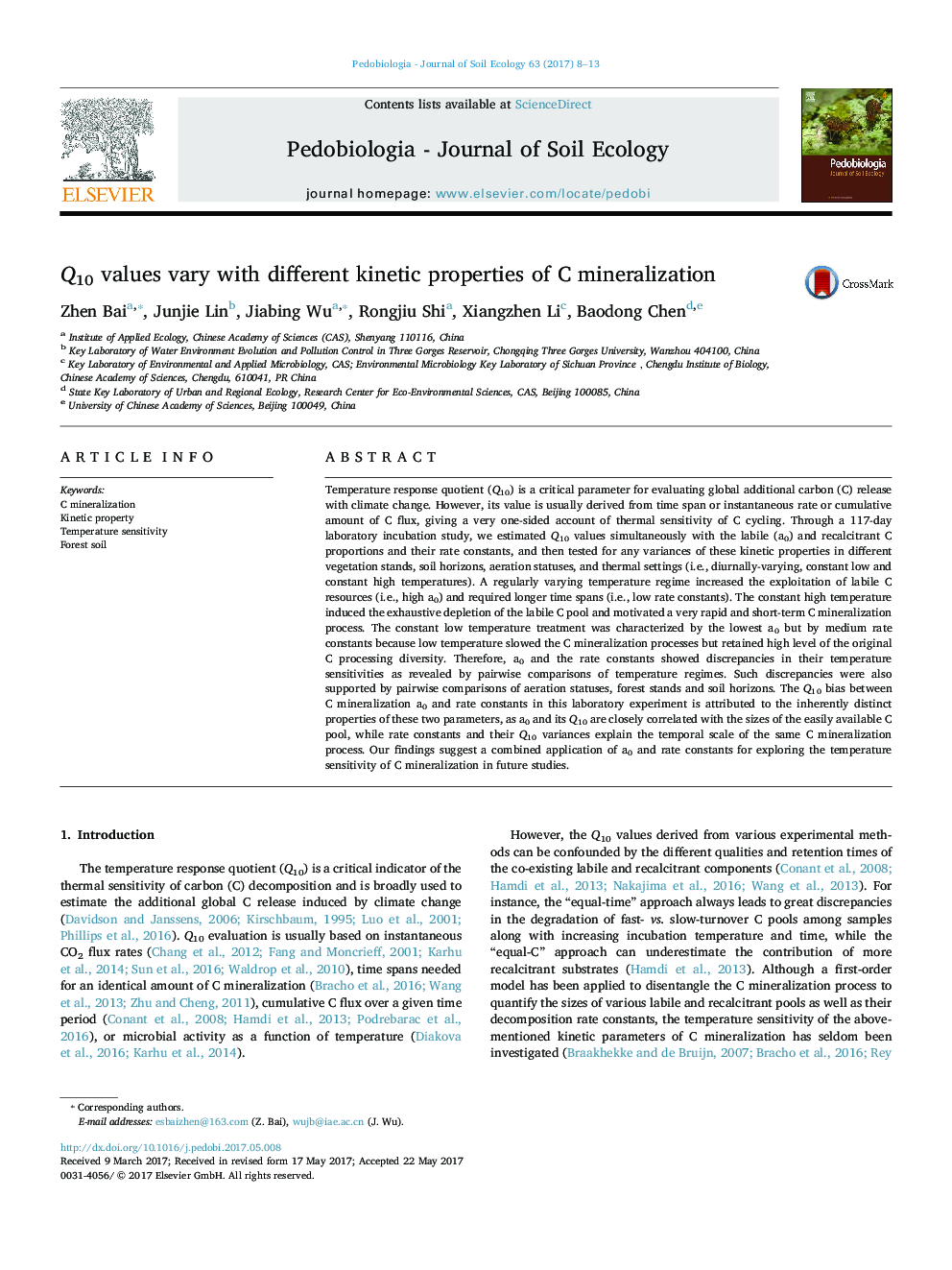| کد مقاله | کد نشریه | سال انتشار | مقاله انگلیسی | نسخه تمام متن |
|---|---|---|---|---|
| 5518772 | 1544019 | 2017 | 6 صفحه PDF | دانلود رایگان |

- Q10 values are derived from different kinetic properties of C mineralization.
- Distinct kinetic parameters reveal inconsistent temperature sensitivities.
- Q10 of the labile C potential is related to the variation in substrate quality.
- Q10 of the rate constant displays the complexity of C decomposition process.
Temperature response quotient (Q10) is a critical parameter for evaluating global additional carbon (C) release with climate change. However, its value is usually derived from time span or instantaneous rate or cumulative amount of C flux, giving a very one-sided account of thermal sensitivity of C cycling. Through a 117-day laboratory incubation study, we estimated Q10 values simultaneously with the labile (a0) and recalcitrant C proportions and their rate constants, and then tested for any variances of these kinetic properties in different vegetation stands, soil horizons, aeration statuses, and thermal settings (i.e., diurnally-varying, constant low and constant high temperatures). A regularly varying temperature regime increased the exploitation of labile C resources (i.e., high a0) and required longer time spans (i.e., low rate constants). The constant high temperature induced the exhaustive depletion of the labile C pool and motivated a very rapid and short-term C mineralization process. The constant low temperature treatment was characterized by the lowest a0 but by medium rate constants because low temperature slowed the C mineralization processes but retained high level of the original C processing diversity. Therefore, a0 and the rate constants showed discrepancies in their temperature sensitivities as revealed by pairwise comparisons of temperature regimes. Such discrepancies were also supported by pairwise comparisons of aeration statuses, forest stands and soil horizons. The Q10 bias between C mineralization a0 and rate constants in this laboratory experiment is attributed to the inherently distinct properties of these two parameters, as a0 and its Q10 are closely correlated with the sizes of the easily available C pool, while rate constants and their Q10 variances explain the temporal scale of the same C mineralization process. Our findings suggest a combined application of a0 and rate constants for exploring the temperature sensitivity of C mineralization in future studies.
Journal: Pedobiologia - Volume 63, July 2017, Pages 8-13